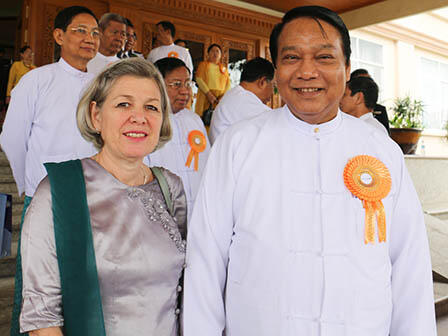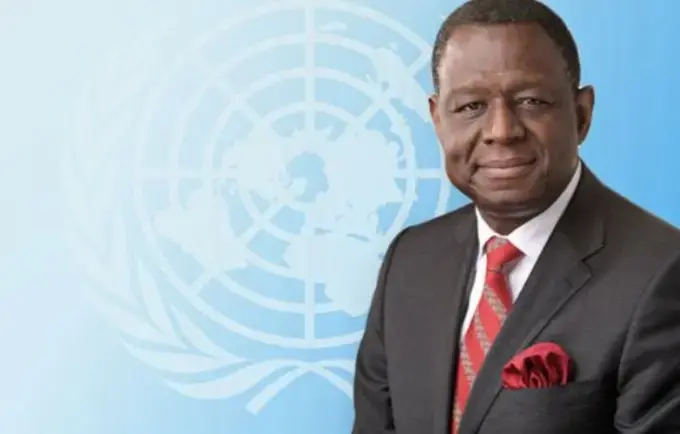Myanmar is prone to a wide range of natural disasters, including floods, cyclones and earthquakes, including areas of conflict and inter-communal tension. As a result, approximately 250,000 people within Myanmar are currently displaced, many of whom are vulnerable groups such as women, children and young people.
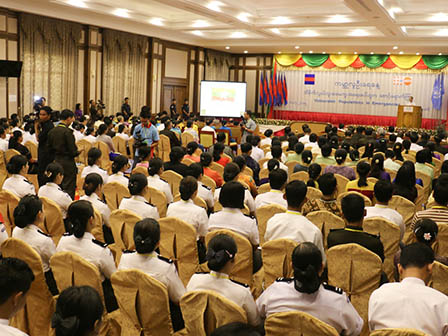
Under the theme of “Vulnerable Populations in Emergencies” this year’s World Population Day was marked by the United Nations Population Fund (UNFPA) along with more than 300 high-level representatives from the Myanmar government, diplomats and media to discuss the plight of vulnerable populations in emergency situations at an event in the capital of Nay Pyi Taw on 11 July (2015).
Janet E. Jackson, UNFPA Representative in Myanmar delivered UNFPA’s Executive Director, Dr. Babatunde Osotimehin’s message for World Population Day which highlighted that during conflicts and natural disasters, women and girls face greater risk of abuse, sexual exploitation, violence and forced marriage. “Women and girls are more vulnerable in emergencies and have specific needs that are too often ignored in crisis. They need services for safe pregnancy and childbirth, and protection from gender-based violence. Securing their safety and ensuring their dignity and health promotes the well-being of families and communities,” said Ms. Jackson.
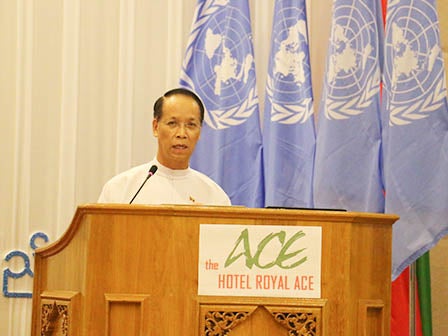
H.E. Dr Sai Mauk Kham, Vice President of the Republic of the Union of Myanmar emphasized that: “Today’s celebration is intended to mainstream the concept that the rights and needs of women and girls are at the forefront of humanitarian responses to maintain their dignity and restore safety, as well as to enable our country to get further involved in activities on population.”
Union Minister for Immigration and Population, U Khin Yi followed with a presentation on Myanmar’s recent census showing how data could be analysed from the perspective of vulnerability. “This helps understanding the needs of vulnerability and will serve as a basis for designing the needs of vulnerable populations. It is important to have information on vulnerable populations. Collecting, processing and disseminating data for use during emergencies is critical. The information will help guide crisis responses, enabling humanitarian organisations and affected populations to better understand how needs are evolving under rapidly changing circumstances. The 2014 census provided us with vital information on these vulnerable groups such as women, children and young people,” he said.
Ms. Jackson stressed that one of the priorities of UNFPA is to “empower and safeguard the well-being of women, adolescent girls, and young people and address their specific needs.” UNFPA provides “dignity kits” or special hygiene kits to protect the integrity and dignity of women and girls and reduce their vulnerability to gender based violence in times of crisis. UNFPA dignity kits consists of basic sanitation items such as underwear, sanitary napkins, tooth brush and tooth paste, shampoo, towel, slippers, a longyi (sarong), whistle, flash light and other related hygiene items.
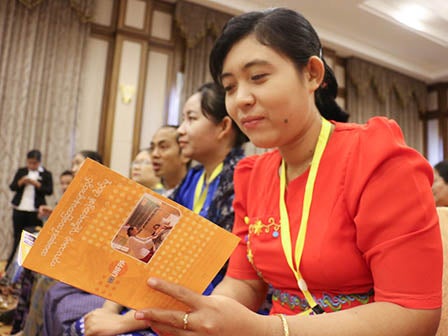
UNFPA is providing life-saving emergency assistance to internally displaced people (IDPs) in different parts of Myanmar such as Rakhine, Kachin and the North-Eastern Shan State with a special emphasis on addressing the needs and rights of women and girls. The aim of UNFPA is helping women and girls maintain their dignity, secure their safety, and restoring their access to sexual reproductive health care.
In 2012, UNFPA in cooperation with its implementing partners in Myanmar deployed mobile sexual reproductive health teams to areas where the needs are greatest, such as hard to reach rural areas and internally displaced people (IDP) camps in Rakhine and Kachin State, where health facilities are in short supply. “Another aspect of our work is to establish women and girls centre’s (WGCs) in an effort to try and prevent, and also respond to gender based violence during conflict and emergency situations,” said Ms. Jackson.
At the event UNFPA screened a video documentary on “A Day in the Life of UNFPA midwives in Rakhine State” which showed midwives carrying out life-saving skills in Internally Displaced Persons (IDP) camps in the Sittwe area. A photos exhibition showcasing disaster relief and humanitarian assistance from natural disasters such as cyclone Nargis in 2008 and other events was also included as part of the observing on the World Population Day activities.
According to a United Nations report released in June on “Global Trends: World at War,” approximately 60 million people had at the end of 2014 been displaced from their homes as a result of conflict and disasters. This was the highest number of displaced people ever recorded. Over three quarters of those displaced are women, children and young people which face particular threats as a result of the absence of health and other essential services that they need.

